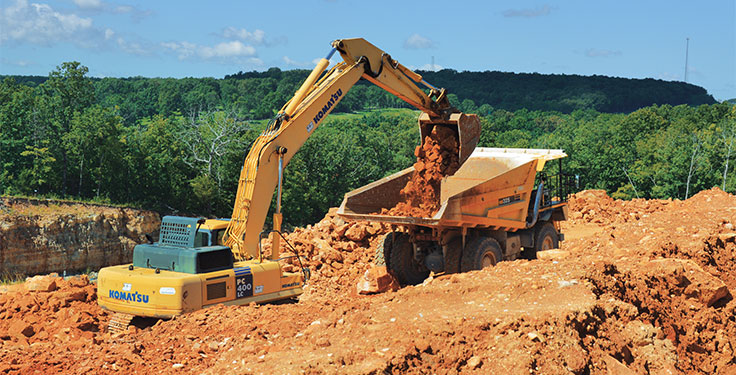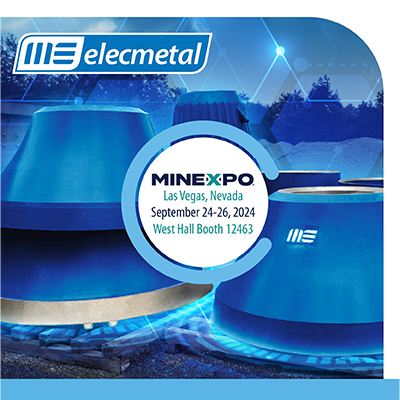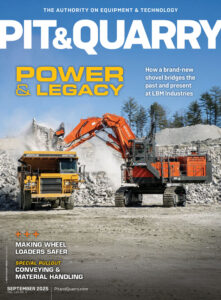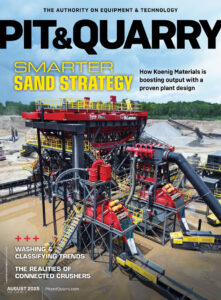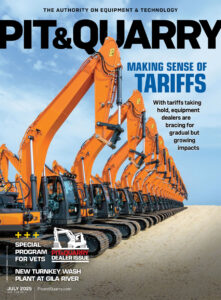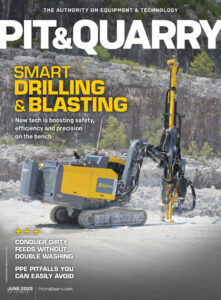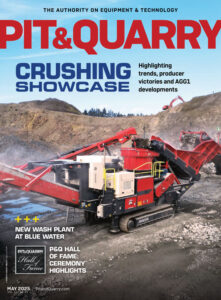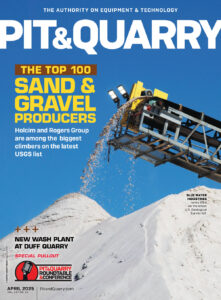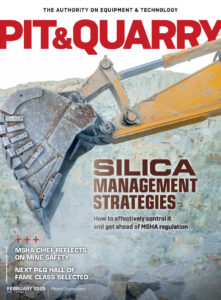Mounted on machines, Develon says sensors alert loader and excavator operators when an object gets too close.
“If there’s an object within 0 to 4 ft., a red box will appear around the in-cab LCD screen,” says Hitchcock and Zak. “From 4 to 8 ft., operators will see a yellow box around the screen, and from 8 to 12 ft. there will be a green box, [which delineates a] safe zone.
“In addition to the colored boxes, there is an audible alarm feature to alert the operator,” adds Hitchcock and Zak.
Today’s safety features come in other forms, as well. On its recently redesigned excavator series, for example, Volvo incorporated a wider footstep and added safety rails to help operators more safely enter and exit cabs.
Lights address safety, too, with Volvo introducing three new light package options for its redesigned excavators. Also, Develon added LED work lights to its -7 Series wheel loaders to make it easier for operators to see and work in low-light conditions.
Making use of what’s available
While manufacturers are doing their part to design safety features into equipment, some aggregate producers are still familiarizing themselves with the very latest advancements.
“Older technologies like rearview cameras are second nature for excavator and wheel loader operators,” says Hitchcock and Zak. “Newer technologies, like the transparent bucket, AVM camera systems and proximity sensors take more time for operators to make use of. It’s important for operators to know about and understand how these technologies work.”
Hitchcock and Zak point to Roy’s Trucking & Landscaping, a company with a quarry based in Nigadoo, New Brunswick, as an example of a safety tech adopter within the industry.

“[The] company focuses on rock production: armor stone, filter stone and aggregates,” says Hitchcock and Zak. “A DX800LC-7 crawler excavator is one of many machines in the company’s fleet. It is equipped with an AVM camera system for enhanced visibility, working as many as 10 to 12 hours a day.”
As Ko describes, owners and site supervisors who have Volvo excavators typically love that technology enables operators to see and distinguish between people and other nearby objects.
“On busy sites, operators typically worry about injuring someone or damaging the machine or property at the site,” Ko says. “Volvo smart view with obstacle detection lets them focus on their work while the machine keeps an eye on their surroundings.”
What’s next?
In the coming years, excavators and loaders should get even safer as manufacturers invest further in technology.
At Develon, for instance, Hitchcock and Zak have a vision for where mobile equipment safety will go.
“The next-generation iteration of the object-detection system is moving object detection,” says Hitchcock and Zak. “If something is moving near the machine, it will appear with a triangle on the moving object, and the system will follow the object.”
Operator fatigue is another area of focus today, with Volvo aiming to develop features that improve this accident cause.
Related: Seven tips for mastering summer excavator maintenance

